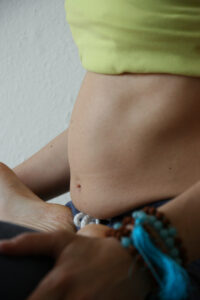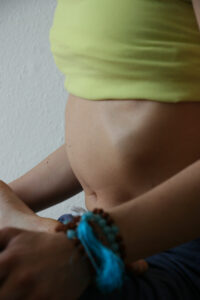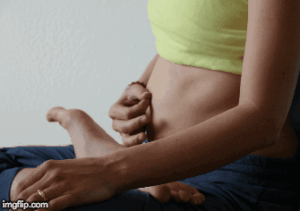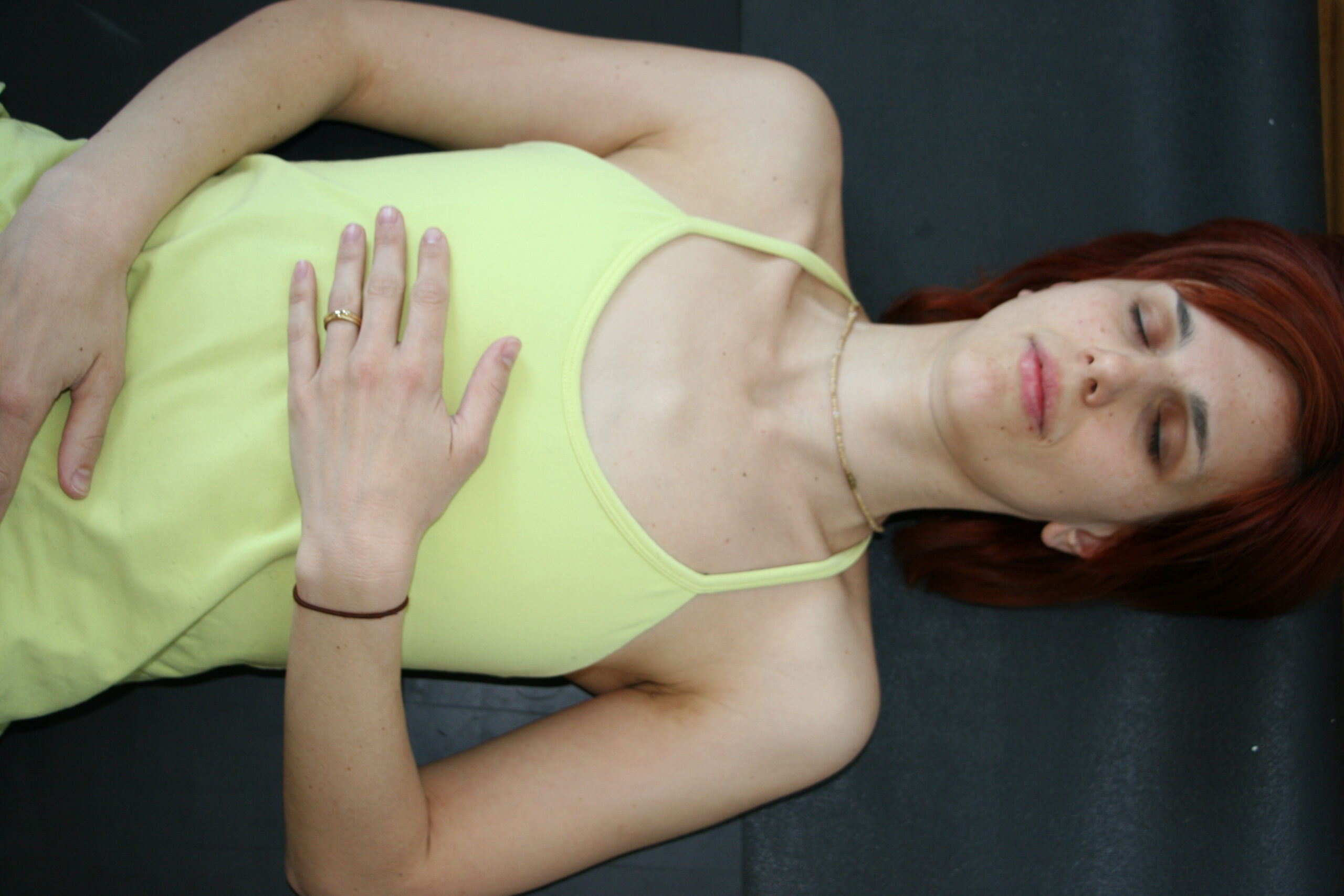Have you ever watched a baby breathe? Their bellies are so soft and round and they bulge even more with every inhale. Then the belly drops slightly with the exhale, like a parachute as it lands. Floop. For most of us, the breath pattern changes as we get older. Somewhere around adolescence, we start to breathe more superficially, higher up in the thorax. We just take in a little sip of air to fill the upper part of the lungs and then expel it again. As if we were saying: “I don't have time to breathe, let's get this over with quickly.” Some people also develop what's called reverse breathing. They suck in the belly as they inhale, hollowing it out, and push it out when they exhale. That's the way I used to breathe when I first came to yoga. I believe I developed the habit because I was dancing during all of my teenage years. Of course, when you're standing at the ballett barre with mirrors covering most of the wall space, you don't want your belly to stick out. So they teach you to breathe only into the side ribs while keeping your belly flat and in.

 That is not inherently wrong. In some martial arts it's actually the indicated way to breathe. It's simply a different way to use (or not use) our diaphragm. For deep abdominal (also called natural or diaphragmatic) breath we engage the diaphragm, which is our primary breathing muscle. The diaphragm is dome-shaped when it's relaxed and its circular rim is attached to our bottom ribs and lower spine. When we contract the diaphragm it flattens out, thereby pushing down on the abdominal organs (that's why the sack of organs bulges forward) and creating a negative pressure in the chest cavity. To even out the pressure in the thorax, we reflexively let the air stream in, i.e. we inhale fully.
That is not inherently wrong. In some martial arts it's actually the indicated way to breathe. It's simply a different way to use (or not use) our diaphragm. For deep abdominal (also called natural or diaphragmatic) breath we engage the diaphragm, which is our primary breathing muscle. The diaphragm is dome-shaped when it's relaxed and its circular rim is attached to our bottom ribs and lower spine. When we contract the diaphragm it flattens out, thereby pushing down on the abdominal organs (that's why the sack of organs bulges forward) and creating a negative pressure in the chest cavity. To even out the pressure in the thorax, we reflexively let the air stream in, i.e. we inhale fully.
When we use the reverse technique, we put the cart in front of the horse. We suck in the abdomnial organs, so the diaphragm has more space and the pressure in the chest cavity drops, so we can fill the lungs with air. Like I said, just a different technique. Both are valid, but we need to be aware that each of the patterns sends a different message to the brain. Superficial, quick breathing is connected with stress or the famous fight or flight response. Deep, full breathing is associated with the relaxation response in the nervous system. And here's what's really important to know: The breath and the nervous system (or the brain) mutually influence each other!
When we are mentally stressed our breath speeds up. If we consciously slow down our breath, we trigger the relaxation response in the nervous system. This makes the breath a unique tool to stay calm even when things get hectic.
Chest breathing or reverse breathing is very prominent in men or athletes, people who are supposed to be competitive, very A-type, and alas, stressed out. People who are consumed with the need to be good enough. If we get used to breathing in a way that signals stress to the body – yes, you guessed right – we will permanently be in stress response, even when there is absolutely no need. Over time, that can be harmful to our overall health.
One night, as I was teaching Pranayama, it dawned on me that chest and reverse breathing patterns arise out of fear. And what are our fears in this incredibly priviledged life? We are afraid of not meeting a deadline, of being late for a meeting or of freezing during a presentation. We are afraid of not being attractive or smart enough. We are afraid to show our wounds and our insecurities. It just recently occurred to me that many of those fall under the category of “being afraid to take up too much space.” Because if we were too conspicuous in one way or another, we would fill out most of the stage, we would draw attention to ourselves. If we were too honest or too loud in some way, we would use up too much space.
The breath reflects our fears: Could it be that babies breathe so fully because they have not had as many scary and scarring experiences (and they forget quite easily at the beginning)? Taking up space, also known as, screaming at the top of their (yes) lungs, is crucial for a baby's survival. But something happens along the way. We are taught that it's rude and inconsiderate to be too loud. We are taught – like I was at the ballett barre – not to take up too much space, breathing and otherwise. We become more hesitant when it comes to expanding and expressing. And naturally our breath will reflect that.
This is one of the many reasons why working with the breath or the formal practice of Pranayama can be so therapeutic and transformative. We learn the technique of deep abdominal breathing again. We train our diaphragm. And literally and figuratively, we begin to fill out the space again. We allow ourselves to be spacious without being apologetic about it.
As we learn to calm the breath we also signal to the brain that the whole system can relax. No need to fight or flee. We create a calm and serene inner environment. From such a place of clarity and security it is much easier not to be afraid.
Exercise:
Lie on your back or sit comfortably. Relax the abdomen to the point of letting it plop out. Place a flat hand or just a finger a few centimeters away from the wall of your abdomen. Inhale and try to let the abdomen inflate so it reaches your hand. Exhale, observe the wall of the abdomen dropping gently drawing in towards the spine and away from your fingers.
It's easier lying on your back, because the abdominal muscles can be more relaxed here. So this is a good place to start.
 (Click to watch the gif)
(Click to watch the gif)
Tip: Relax your jaw as you breathe. This will also influence the nervous system.


No comments.